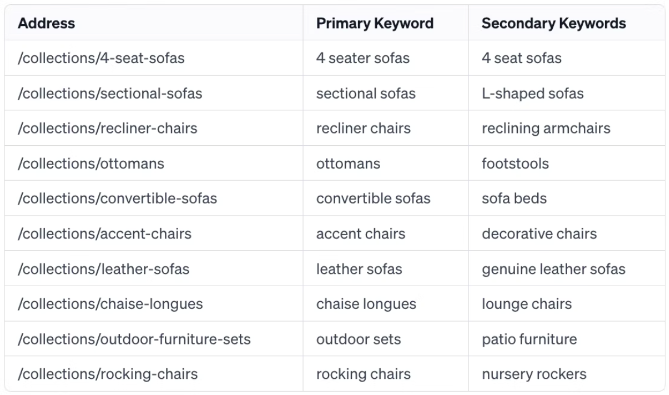Keyword Research & MTPE: The Key to Multilingual SEO Success
Developing a multilingual SEO strategy for your ecommerce brand is vital for international success. Join Swanky’s Anna Giles as she shares how she creates international SEO strategies that drive traffic and increase brand visibility around the world.
Written By
Anna Giles

The ability to communicate and engage with a global audience is no longer a nice-to-have, but a necessity for businesses looking to successfully execute cross-border commerce.
Whilst translating a site’s content is a core part of this process, incorporating a multilingual SEO strategy can often be overlooked.
In this article, Anna Giles, Senior SEO & Content Manager at Swanky, explains why crafting a multilingual SEO strategy leads to increased traffic and higher SERP rankings – and how you can do it for your ecommerce brand.
Contextualisation is king in international marketing
Almost 60% of websites are in English, but less than a third of internet users are native English speakers. Meanwhile, 75% of consumers are more likely to buy a product if the information is supplied in their language.1
These statistics demonstrate the vast number of people yet to be served in their own language. Numerous businesses are missing out on the opportunities and revenue available by engaging these groups.
Ecommerce internationalisation isn’t just about translating your website to target a new market, though. It’s about adapting your content to reflect the culture, language and search behaviour of that market; it’s about contextualisation.
This is the process of breaking down linguistic and geographical barriers to create a user experience that increases your brand’s visibility in another country, engages a new market and eases the online customer journey.
To achieve this, not only do you need accurate translation, you also need in-depth keyword research to understand how and what people search for. The solution is a multilingual SEO strategy that draws from thorough regional search term analysis.
Why is machine translation (MT) not enough?
Raw MT output is never 100% accurate and cannot communicate cultural and linguistic nuances.
We opt to utilise Weglot for a number of our clients because they combine the best MT tools with added support from Neural Machine Translation (NMT). However, they never claim that this is completely accurate.
Whilst MT is cost-effective and speedy (and certainly a first step in a brand’s internationalisation process), it is not the end point. Building trust and connection with customers is the key to online success.
What is Machine Translation Post-Editing (MTPE) and why use it for ecommerce translation?
Machine Translation Post-Editing (MTPE) is a method of translation that combines the speed of MT with the accuracy of human translation. The process involves a human reviewing and amending the output of an MT tool.
MTPE enables:
- communication of brand guidelines relevant to the targeted country or region;
- accurate translation of words with multiple meanings (e.g. ‘run a meeting’ and ‘run a race’);
- accurate word-for-word translation where appropriate;
- translation authenticity for native speakers;
- enhanced user experience (UX) for native speakers;
- improved customer relationships; and
- opportunities to rank for valuable keywords in the target country or region.
Using MTPE to build trust and increase revenue
Given the fact that in ecommerce, communication and connection with your customers is vital to build trust and see revenue growth, MTPE offers a suitable and cost-effective solution for brands looking to branch into new markets around the globe.
The language you use across your store must resonate with your audience. A customer who engages with your brand in their native language is more likely to make a purchase. However, if you’re using poorly translated text, any trust you’ve already built, whether through a marketing funnel or word of mouth, will be eroded.
Why is keyword research crucial for your multilingual SEO strategy?
Keyword research is the process of identifying and analysing the search terms that people enter into search engines when looking for products or services similar to yours. These keywords serve as the backbone of SEO, informing your site structure and internal linking strategies.
You must identify what your customers are searching for, and what language and terminology they are using. This allows you to make data-informed decisions regarding SEO.
Conducting comprehensive and multilingual keyword research allows you to optimise product titles, product descriptions, metadata, blog content and other on-site content with the correct keywords.
If you know what your audiences are searching for, you can tailor your website to appear in SERPs in however many languages you require.
How to create a multilingual keyword SEO strategy
Extensive market research should underpin your internationalisation and multilingual SEO strategies. Weglot recommends exploring industry reports that reveal regional consumer preferences, behaviour, and trends. Dig into the demographics of your users, analytics from your website and social media channels.
All of these can reveal important information about your visitors’ geographical locations and languages. For example, discovering that you already have a strong visitor base from Brazil, signals a need for Brazilian Portuguese content.
A competitor analysis could also provide additional insight. If your competitors are gaining traction in Germany, translating your content into German could be a stepping stone to tapping into this market.
Take the time to understand cultural nuances like idioms, regional trends, and local preferences.
Imagine promoting a trendy footwear range in the US that leverages a popular meme. If you attempt to replicate this in Japan without understanding its cultural context, your marketing efforts could fall flat. Encouraging local customer feedback or working with regional experts can help avoid such situations.2
1. Identify
One of the first steps in developing a multilingual SEO strategy is to identify which keywords your store will target. This equates to understanding your audience’s search behaviour.
Below are three options for this process. Choose which option best suits your brand and ways of working.
a) Keyword universe
Developing a keyword universe is the process of identifying a complete set of keywords and phrases relevant to your business. These may include:
- branded and non-branded search terms;
- keywords for products, collections and USPs; and
- questions related to your brand and product offering.
At this point you should also note the monthly search volume, keyword difficulty and search intent for each keyword you list.
b) Keyword mapping
Keyword mapping is another route you can take to determine the keywords that fill your SEO strategy.
This option requires you to choose primary and secondary keywords for each page on your site. Below is a table showing this in practice.

Example of keyword mapping; each URL slug has been assigned a primary and secondary keyword.
c) Keyword glossary
The third option for this initial stage is to develop a keyword glossary. Weglot has a built-in glossary feature which you can manually add to, or you can import/export your own list of terms.
This should include the following information:
- Terminology
- Product names
- Linguistic style (eg. formal use of ‘you’)
- Tone of voice
2. Translate
The next phase of crafting a multilingual SEO strategy is to translate all your keywords to the target language. We’ve written elsewhere on our blog about different tools available for ecommerce translation, but Weglot is one that continues to perform well.
You can also opt to utilise human translation here. This would involve a native speaker translating your identified keywords.
Semrush, Moz and Ahrefs are all good tools for multilingual keyword research. We’d recommend taking time to learn which best suits your specific needs. Whichever tool you choose, continue to use the same one throughout this process, because data can vary slightly and cause unnecessary confusion.
3. Evaluate
Ensuring your translated keywords are accurate is an important process before implementation and is closely connected to the translation phase. Run your localised keywords through an international keyword research tool to identify:
- Monthly search volume
- Competitive difficulty
- Search intent
If a native speaker translated your keywords, there may be multiple options to decide from. Use a keyword research tool to assess which is most relevant according to the above criteria.
4. Implement
Now that you’ve completed the above steps, you can localise your website content to capture cultural nuances either by rephrasing your copy or switching out keywords. Optimise your existing machine translated content with preferred keywords, regional languages and colloquialisms to better resonate with your new audience.
You can also begin creating content that specifically caters to your target audience, resonating with their needs and search behaviour.
Weglot allows website localisation to be smooth and effective. This is thanks to a user-friendly interface and integration capabilities, meaning the tool adapts to your needs and workflows.
Remember, it’s all about contextualisation and connection.
International SEO strategy in practice
Our Growth Accelerator team has enjoyed working with a leading hair care brand to scale and internationalise its DTC ecommerce offering on Shopify. The brand has engaged a variety of our services, including PPC, Data & Analytics and Digital Marketing.
Our SEO services have also been utilised and a multilingual strategy has been developed to increase brand awareness and drive traffic to new international stores.
We put into practice the above steps and saw upticks in metrics across the brand’s stores, from the US to the UK and EU.
Since employing MTPE in this multilingual SEO strategy, from November 2023 to March 2024 we’ve seen:
- 113% and 61% increase in users to the French and Dutch stores respectively;
- 988% increase in conversion rate on the French store; and
- 1129% increase in conversion rate on the Dutch store.
Moreover, for the brand’s US store we’ve developed a robust organic content strategy that was informed by SEO research. This new content, that was informed by data about US search behaviour from February 2023 to January 2024, has seen great results, including:
- +44% sessions
- +39% transactions
- +65% attributed revenue
- +672% increase in organic traffic.
Swanky’s international SEO services
Our comprehensive SEO services have been curated to accelerate online growth for new and established brands. Whether you’re needing to create a new international SEO strategy, learn what opportunities you can leverage, or optimise your store for organic traffic, Swanky can help.
Get in touch with our solutions team to discuss an initial SEO audit. This will allow us to better understand your needs and create a commercially prioritised SEO roadmap.
For reference:
[1] https://csa-research.com/Blogs-Events/CSA-in-the-Media/Press-Releases/Online-Shoppers-Rarely-or-Never-Buy-from-English-only-Websites [2] https://www.weglot.com/blog/multilingual-content-marketing
